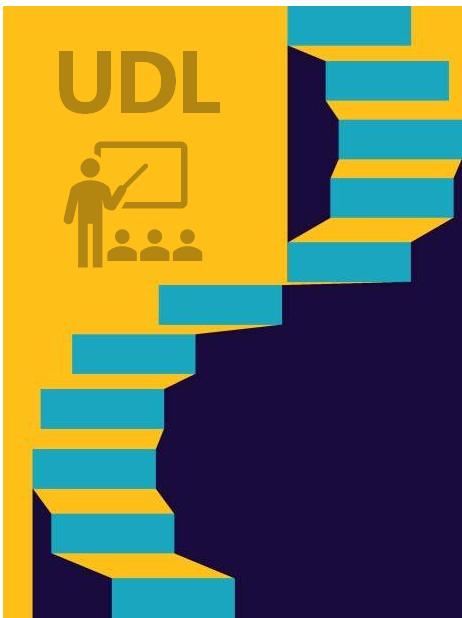Welcome
UDL is a framework for designing instruction that meets the needs of all learners. We understand that as a teacher, you might have questions or concerns about applying UDL in your classroom. That’s why we want to address the elephants in the room and help you overcome any barriers that you may encounter.
We also provide a self-assessment tool that can help you gauge where you currently stand in applying UDL in the classroom. This tool can be a great starting point for identifying the areas that you need to focus on as you continue to learn and grow as a UDL practitioner.
Additionally, we offer a range of Open Educational Resources that you can use to apply UDL. These resources are designed to support you in implementing UDL principles in your classroom and help you create an environment that is inclusive and accessible for all learners.
Finally, we encourage you to share your main takeaways with colleagues and other educators. By sharing your learning and experience with others, you can help spread the word about UDL and inspire more teachers to create inclusive learning environments. Thank you for joining us on this UDL Learning Path!

Elephants in the room
I do not have time to apply UDL in my classroom
Remember, small steps. You don’t have to do everything at once. At the beginning, focusing on the low hanging fruit gathers you quick wins.
Can I accomodate all my students’ needs while using UDL?
You definitely can, so long as you identify their needs, the different learning types and their preferences. You’ll be spoilt for choice in UDL procedure and that will help you notice needs that might not be clear before. Remember: you don’t have to do everything at once. Start from the barriers they face, because removing one barrier can impact a lot of students.
How can I assess my students’ progress using UDL?
Reflect about what you are assessing and the learning goals you set out and start from there.
Is it applicable to all subjects?
Yes, you can use the provided lesson plans on the next page to adjust, apply and implement UDL.
Too much information – too many checkpoints to follow/complete
Remember, small steps. You don’t have to do everything at once. At the beginning, focusing on the low hanging fruit gathers you quick wins.
After years of work, I’ve got my lessons all prepared. Why should I change anything?
Without knowing it, some parts of your teaching are already UDL. Identify what works in your teaching practice. Are there any areas where you feel less effective? Those are a good place to start drawing inspiration from UDL.
If I apply UDL in my class, I’ll be losing control of my students
It can be scary to change your practice, but the goal of UDL is to develop expert learners who are purposeful and motivated. Be kind: it doesn’t always work from the first try. A nice place to start is to focus on recruiting interest and engaging students. Gaining autonomy in learning is a process for you and your students.
I don’t know my students enough to adapt my classroom
UDL is not individualized learning. You can use this resource to quickly gain insight in the barriers your students face. Start by observing them and building up information over time. Remember: removing one barrier can impact a lot of students.
How to communicate the learning goals clearly?
Follow plain English guidelines to keep your message simple.
My students show resistance to collaboration and teamwork
Collaboration and teamwork are learnable skills and take time to develop. You can foster a cooperative classroom without enforcing one specific kind of team work.
My students aren’t able to take their learning in their own hands
Self-direction is a learnable skill and it takes time to develop. You can assist your students in developing this skill set.
How do I help my students reflect on their own learning?
Check out these resources for simple ways to develop self-reflection.
I don’t have the necessary technical skills and knowledge to change my materials
One thing at a time. Check out these resources for simple ways to address this.
My organisation restrics the adaptations I’m allowed to make in my classroom
Identify what you can change and work on how you can support your students to tackle the assessement they will have to pass.
I don’t have the right tools to keep track of all students individual progress and needs
Start from the barriers some students face, because removing one barrier can impact a lot of students.
If you have any other concerns or questions about applying UDL in your classroom, we encourage you to try our self-evaluation support tool.